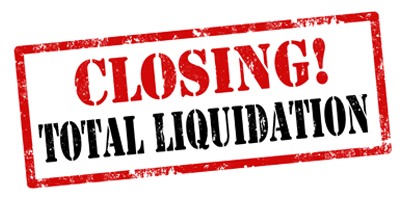Everything about Company Liquidation
Everything about Company Liquidation
Blog Article
Rumored Buzz on Company Liquidation
Table of ContentsCompany Liquidation Can Be Fun For Everyone3 Simple Techniques For Company LiquidationSome Ideas on Company Liquidation You Need To KnowWhat Does Company Liquidation Mean?The Best Strategy To Use For Company Liquidation
A liquidator is particularly assigned to look after the winding up of a firm's events in order for it to be shut down typically when the firm is declaring bankruptcy. The liquidator is an objective 3rd party that oversees the sale of company possessions in order to pay off any kind of superior financial debts.Their function consists of, however is not limited to: Neutral Overseer: A liquidator is entrusted with functioning as an impartial 3rd party to manage the whole company liquidation procedure. Produce Declaration of Matters: Liquidators should produce an extensive statement of events document. This file is dispersed to creditors, describing the present monetary status of the company at the time of its liquidation.
After the liquidation of a firm, its existence is erased from Business Residence and it discontinues to be a lawful entity. If supervisors browsed the procedure without problem, there would be no penalties or individual liability for solid financial debts anticipated. Currently, with a tidy slate, supervisors can check out new organization opportunities, though specialist assessment is a good idea.
The Facts About Company Liquidation Uncovered
If even more than 90% of all business shareholders agree, liquidation can take place on brief notification within seven days, the minimal legal notification for lenders. Nevertheless, typically, the larger the liquidation and the even more possessions and funding business has, the longer the process will certainly take. 'Do I need to pay to liquidate my business?', the solution will certainly depend on whether or not your organization has any type of properties remaining when selling off.

We understand that no 2 business are the exact same, which is why we will put in the time to learn more about your organization so we can recommend the very best program of action for you. We only work in your ideal rate of interests, so you can be totally certain in the service we offer.
Some Known Facts About Company Liquidation.
In the UK, there is a set process to shutting down or reorganizing a restricted company, whether it is solvent or bankrupt. This process is recognized as liquidation and can just be handled by a licensed insolvency practitioner (IP) based on the Bankruptcy Act 1986. There are four primary kinds of business liquidation process: Lenders' Voluntary Liquidation (CVL); Compulsory liquidation; Management; and Participants' Voluntary Liquidation (MVL).

In these situations, it is essential that the firm discontinues trading; if the service continues to trade, the supervisors might be held directly responsible and it can lead to the insolvency expert reporting wrongful trading, understood as misfeasance, which might result in lawful action. The directors appoint an insolvency practitioner and when this has actually been agreed and validated, there is a conference with the shareholders.
The supervisors are no much longer included in what takes websites place, consisting of the sale of the business's assets. If the directors want any of the possessions, they can alert the IP.
The 5-Minute Rule for Company Liquidation
The primary distinction is that the business's lenders used to the court for an ending up order which requires the financially troubled company into a liquidation process. Lenders take this action as a last hotel due to the fact that they have not received repayment with other types of settlement. The court designates an insolvency practitioner, also understood as an official receiver, to conduct the obligatory company liquidation procedure.
This kind of company liquidation is not volunteer and directors' conduct is reported to the UK's Assistant of State once the liquidation procedure has actually been finished. Any type of supervisor that fails to coordinate with the IP or has been involved in supervisor misbehavior, my response or a fraudulent act, may result in significant consequences.
It is made use of as a way to protect the firm from any lawsuit by its creditors. The directors of the firm accept make regular payments to settle their financial debts over a time period. The appointed administrator takes care of the voluntary administration procedure, and obtains the settlements which they then disperse to creditors according to the agreed amounts.
Unknown Facts About Company Liquidation
This gives the firm with time to create a strategy going ahead to rescue the company and avoid liquidation. At this point, supervisors hand control of the firm over to the designated administrator. If a company is solvent but the supervisors and shareholders want to shut business, a Members Volunteer Liquidation is the right choice.
The business liquidation procedure is managed by a liquidator appointed by the supervisors and investors of the company and they must authorize a statement that there are no creditors continuing to be. The liquidation process for an MVL is similar to that of a CVL because assets are realised however the proceeds are dispersed to the directors and the shareholders of the company after the liquidator's costs have actually been paid.
Report this page